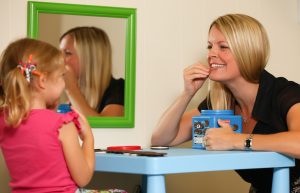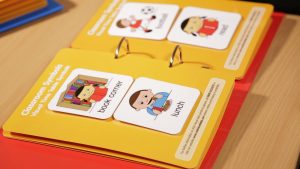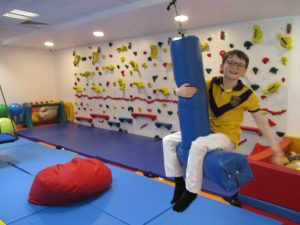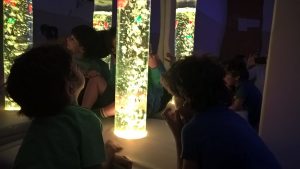2nd April is World Autism Awareness Day!

World Autism Awareness Day (WAAD) is an internationally recognised day on the 2nd of April every year, encouraging Member States of the United Nations to take measures to raise awareness about children with autism throughout the world. Adopted in December 2007, it was proposed by the UN representative from Qatar, Her Highness Sheikha Mozah Bint Nasser Al-Missned, Consort of His Highness Sheikh Hamad Bin Khalifa Al-Thani, the Emir of the State of Qatar, and supported by all member states.
World Autism Day is also one of only four official health-specific UN Days. The day itself brings individual autism organizations together all around the world to aid in things like research, diagnoses, treatment, and overall awareness for those with the disorder. The first Autism Awareness Day was highly mandated and hosted by the UN branches around the world. The highlighted events were held at the United Nations Headquarters in New York. The events hosted by the UN includes a panel discussion sponsored by Qatar and the UN representative responsible for the resolution, along with the World Health Organization and the NGO Autism Speaks. In addition, there was a briefing held for NGO’s on topics relating to autism awareness. Both of these events focused on personal efforts for awareness raising and eliminating negative stigma associated with autism. In addition, there were highlights on the struggles of people with autism and the importance of better understanding the disorder.
Autism Speaks – is considered one of the largest non-governmental organizations in the field of efforts to raise awareness to autism, further research, and act as an advocate to those with the disorder. This group is considered by many to lead the field in science and advocacy, and is a leader in research dealing with causes, prevention, treatments and cures. They also act as a large support system for families of an autistic person. However, they are also seen by many as a controversial group, especially among autistic communities, for their perceived support of abusive treatments and demonisation of autistic people. Read more about Autism Speaks:
 Light It Up Blue is one of the largest initiatives posed by Autism Speaks. It is observed on WAAD, and is a dedication to autism awareness.
Light It Up Blue is one of the largest initiatives posed by Autism Speaks. It is observed on WAAD, and is a dedication to autism awareness.

What is Autism? Autism is a complex neurobehavioral condition and because of the range of symptoms, this condition is now called Autism Spectrum Disorder (ASD). They are both general terms for a group of complex disorders of brain development. These disorders are characterized, in varying degrees, by difficulties in social interaction, verbal and non-verbal communication, impairments in developmental language and repetitive behaviors.
What are the causes of Autism Spectrum Disorder? The exact cause is unknown. It’s a complex condition and may occur as a result of genetic predisposition (a natural tendency), environmental or unknown factors. Read more about Autism Spectrum Disorder & Causes.
Is Autism caused by genetics or environment? The role of environmental factors in the development of autism is a crucial area of study. We know that genetics strongly influence the risk for developing Autism Spectrum Disorder (ASD). However, genetics alone do not account for all instances of autism. Read more: Environmental Factors in Autism Initiative, Science & Research.
When was Autism discovered and by whom? Eugen Bleuler, a Swiss psychiatrist, was the first person to use the term. He started using it around 1911 to refer to one group of symptoms of schizophrenia. In the 1940s, researchers in the United States began to use the term “autism” to describe children with emotional or social problems. Read more: A History of Autism – WebMD.
How do you test for Autism? Screening and Diagnosis. Diagnosing autism spectrum disorder (ASD) can be difficult, since there is no medical test, like a blood test, to diagnose the disorders. Doctors look at the child’s behavior and development to make a diagnosis. Therapists can use behavioral assessments. This process begins with a Parent Consultation where the therapists and the parents go over the medical history of the child. During the Parent Consultation, the therapist asks general questions about the child’s development, such as whether a child shows parents things by pointing to objects, etc. There are also diagnostic guidelines for autism that therapists can refer to. Clinical observation during therapy sessions are essential, and the use of developmental and intelligence tests when appropriate. Read more about Autism-Exams and Tests – WebMD or refer to Autism Speaks website.
How Can Sensation Station Help And Support Children With Autism?
The following therapies address symptoms commonly associated with autism, but not specific to the disorder.
Speech-Language Therapy (SLT): Most autism behavioral intensive therapy programs include Speech-Language Therapy. With a variety of techniques, our Speech-Language Therapists address a range of challenges often faced by a child with autism. For instance, some children on the autism spectrum do not speak, while others love to talk but have difficulty using conversational speech and/or understanding the nuances of language and non-verbal cues when talking with others. Speech-Language Therapy is designed to coordinate the mechanics of speech with the meaning and social use of language. After the initial Parent Consultation, therapy starts with an individual evaluation by a speech-language therapist. From this evaluation, the therapists sets goals that may include mastering spoken language and/or learning non-verbal communication skills such as signs or gestures. In each case, the goal is to help the child communicate in more useful and functional ways. The speech language therapists can provide therapy one-on-one, in a small group or in a classroom setting.

Augmentative and Alternative Communication (AAC). Non-verbal children with the autism spectrum disorder (ASD) can benefit from a variety of augmentative and alternative communicative (AAC) devices and methods.
The Picture Exchange Communication System (PECS) is among the most commonly used with children and adults who have little or no verbal ability. Therapists, teachers and parents help the child build a vocabulary and consistently articulate desires, observations and feelings through pictures. This system can be taught and used at home, in the classroom and a variety of other settings. At the start of a PECS program, the therapist teaches the child to exchange a picture for an object – for instance, a picture of an apple for an actual apple. With instruction, the child learns to distinguish pictures and symbols and use both to form sentences. Although PECS is based on visual tools, the program emphasizes and reinforces verbal communication. Caregivers can purchase standard PECS images as a part of a manual or simply gather photos from everyday sources such as newspapers, magazines and books.

Makaton: Some children with ASD have difficulty with using speech and they need to use different ways to communicate, like using Makaton symbols and signs. All our therapists use Makaton – speech with signs (gestures), symbols (pictures) to help children communicate and facial expression, eye contact and body language to give as much information as possible. Research has shown that these are easier to learn than spoken words. Children can use Makaton to let others know what they want, make choices, share information and understand more. This helps build and develop important communication and language skills. Also, using Makaton is fun!

Occupational Therapy (OT) addresses a combination of cognitive, physical and motor skills. Its goals including helping a child gain age-appropriate independence and participate more fully in life. For a child with autism spectrum disorder (ASD), Occupational Therapy often focuses on skills for appropriate play or leisure skills, learning and self-care skills. After the initial Parent Consultation, therapy begins with our Occupational Therapist evaluating the child’s developmental level as well as related learning styles, social abilities, and environmental needs. Based on this evaluation, the occupational therapist determines goals and selects strategies and tactics for enhancing key skills. For instance, goals may include independent dressing, feeding, grooming and use of the toilet, along with improved social, fine motor and visual perceptual skills. Typically, Occupational Therapy involves one-hour sessions with a frequency determined by the individual’s needs. In addition, the child practices strategies and skills – with guidance – at home and in other settings including school.

Sensory Integration (SI): Many children with autism spectrum disorder (ASD) have challenges in processing sensory information such as movement, touch, smell, sight and sound. Sensory integration (SI) identifies such disruptions and uses a variety of techniques that improve how the brain interprets and integrates this information. Our Occupational Therapy often includes Sensory Integration. The Occupational Therapist will begin with an individual evaluation to determine the child’s sensitivities. From this information, the therapist plans an individualized program that matches sensory stimulation with physical movement to improve how the brain processes and organizes incoming information. As such, the therapy often includes equipment such as swings and trampolines. Sensory integration therapy can allow a child with sensory integration difficulties to become more “available” for learning and social interactions. Family members and teachers often find that its techniques can help calm an affected child, reinforce positive behavior and help with transitions between activities.

Sensation Station’s purpose-built sensory gym and the multi-sensory “Snoezelen” room are designed to provide the right environment to aid occupational therapy and sensory integration. For more information go to our Facilities.

We fully understand the financial burden families face when caring for a child with special needs. Hence, Sensation Station holds a FUND to help towards these costs. Please contact us for more information or click here
